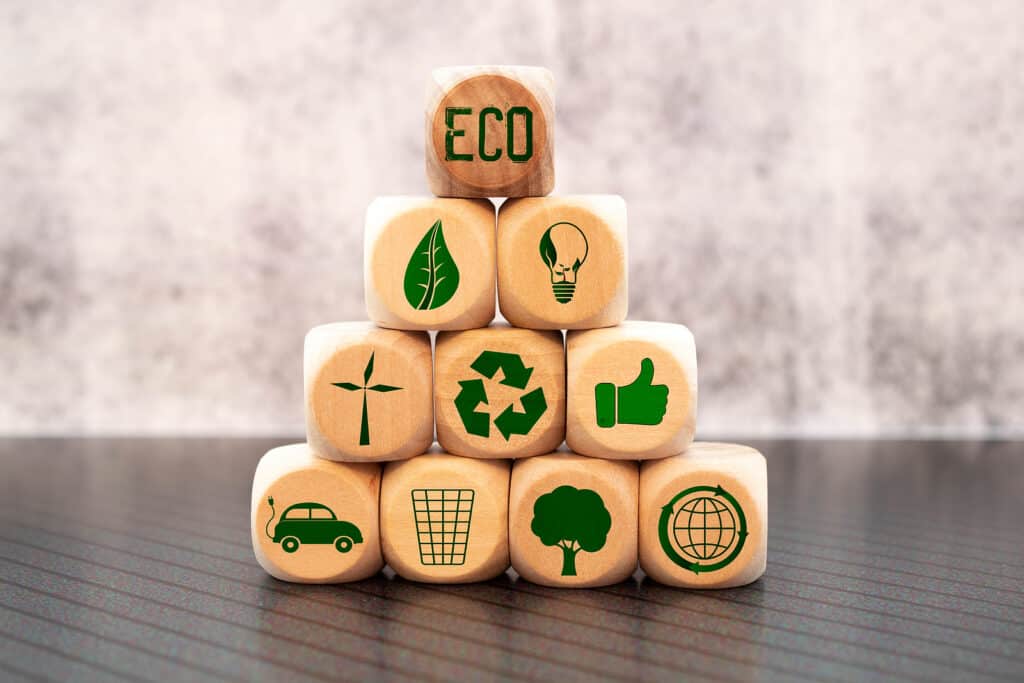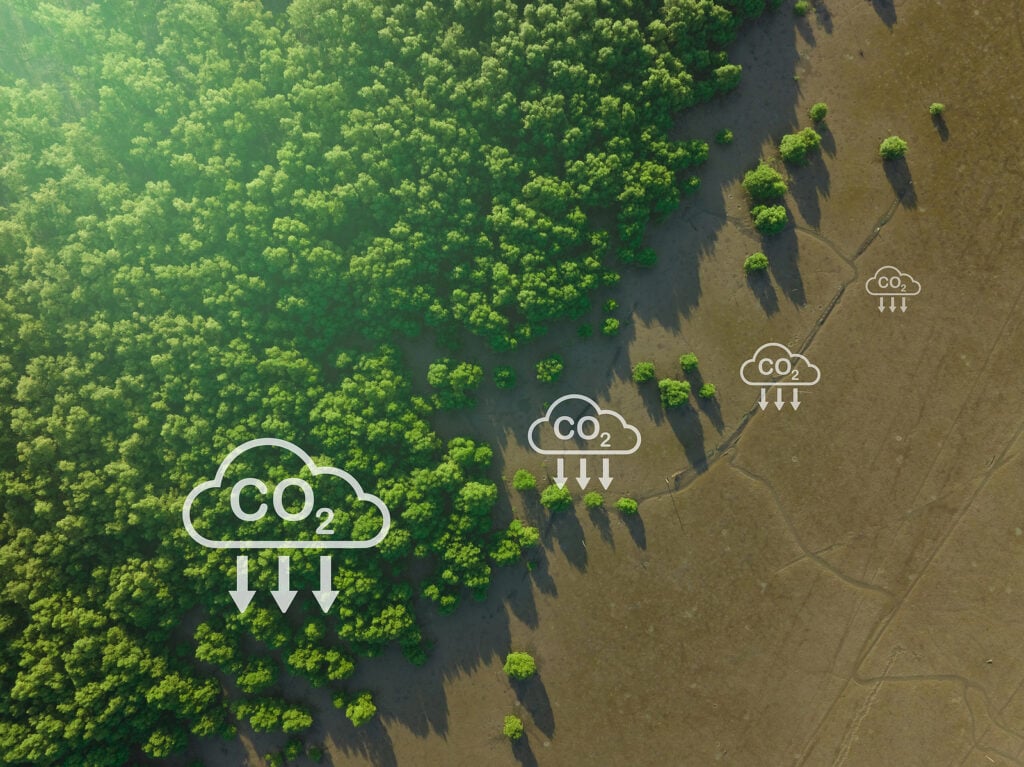Know Before Investing in CCS
As someone deeply interested in exploring the realm of carbon trading markets and their potential for investment, delving into the dynamic landscape of Carbon Capture and Storage (CCS) presents an exciting prospect. In the current environmental discourse, CCS has surged into the spotlight as a topic of immense significance. The pressing need to curtail carbon emissions on a global scale has heightened its relevance, transforming it into a potential game-changer that investors are keenly eyeing.
Embarking on the journey of comprehending CCS investments demands a profound grasp of the technology's intricacies, its operational intricacies, and a balanced evaluation of its merits and drawbacks. This article serves as an indispensable guide, tailor-made for individuals like you who are navigating the multifaceted world of carbon trading markets. By capitalizing on the growing value of carbon credits intertwined with CCS initiatives, you can potentially unlock not only financial opportunities but also a significant role in shaping a more sustainable future.
What is Carbon Capture and Storage (CCS)?
Carbon Capture and Storage (CCS) is a vital technology designed to combat climate change by capturing CO2 emissions at their source, like power plants. The process involves capturing, transporting, and securely storing CO2 underground in stable formations, preventing its release into the atmosphere. CCS plays a crucial role in reducing global carbon emissions and curbing the impacts of global warming.

Why is CCS Important
Carbon Capture and Storage (CCS) holds significant importance as a critical tool in the fight against climate change. Its primary value lies in its capacity to address the escalating levels of carbon dioxide (CO2) emissions, which are driving global warming and environmental instability. Here are key reasons why CCS is important:
Mitigating Climate Change
CCS directly targets one of the leading contributors to climate change – CO2 emissions. By capturing these emissions at their source, CCS prevents them from entering the atmosphere and exacerbating the greenhouse effect. This helps reduce the overall concentration of CO2, slowing down global temperature rise and its associated adverse effects.
Preserving Air Quality and Health
The implementation of CCS technology translates to decreased emissions of harmful pollutants accompanying CO2, such as particulate matter and nitrogen oxides. This leads to improved air quality, benefiting human health and reducing the occurrence of respiratory diseases and other health complications related to poor air quality.
Transitioning to Low-Carbon Energy
While the world strives to transition to renewable energy sources, many sectors still rely on fossil fuels. CCS provides an interim solution by capturing CO2 emissions from these sectors, allowing for the continued use of fossil fuels while minimizing their environmental impact.
Supporting Industrial Processes
Industries like cement, steel, and chemicals have high CO2 emissions due to their production processes. CCS can be integrated into these processes to significantly cut down emissions, facilitating the decarbonization of these critical sectors.
Enabling Negative Emissions
As the world seeks to achieve net-zero emissions, CCS plays a pivotal role in enabling negative emissions. This means capturing more CO2 than is emitted, effectively removing CO2 from the atmosphere and compensating for emissions in other sectors.

How Does CCS Work?
Carbon Capture and Storage (CCS) is a complex process that involves capturing carbon dioxide (CO2) emissions at their source, transporting the captured CO2 to storage sites, and securely storing it underground. Here's a detailed breakdown of how CCS works:
Carbon Capture
The first step of CCS is capturing CO2 emissions from industrial processes or power generation plants. This is typically achieved through one of three main methods:
- Post-Combustion Capture: In this method, flue gases emitted from power plants or industrial facilities are passed through a capture system. This system contains a solvent or material that selectively absorbs CO2 from the flue gas. Once absorbed, the solvent is then treated to release the CO2, which can then be compressed for transportation.
- Pre-Combustion Capture: This method is commonly used in industries where fossil fuels are used to produce hydrogen, like refineries or chemical plants. The fuel is reacted with oxygen in a controlled environment, producing a mixture of hydrogen and CO2. The CO2 is then separated from the hydrogen for capture.
- Oxy-Fuel Combustion: In oxy-fuel combustion, the fuel is burned in an atmosphere of pure oxygen rather than air. This produces a flue gas that consists mainly of CO2 and water vapor, which makes the separation of CO2 easier.
Carbon Transportation
Once the CO2 is captured, it needs to be transported from the capture site to a suitable storage site. Transport methods include pipelines, ships, or trucks. The choice of method depends on factors like distance, volume of CO2, and geographical considerations.
Carbon Storage
The captured CO2 is then transported to designated storage sites, often deep underground. There are several types of geological formations that can be used for storage:
- Depleted Oil and Gas Reservoirs: These underground formations were once filled with oil and gas but have been emptied over time. They can now serve as storage sites for CO2. The CO2 is injected into these reservoirs, displacing any remaining oil or gas and being trapped in the rock formations.
- Deep Saline Aquifers: These are porous rock formations deep underground that contain salty water. Injecting CO2 into these aquifers can result in a chemical reaction where the CO2 reacts with the minerals in the rock, turning into a stable mineral form over time.
- Enhanced Oil Recovery (EOR): In some cases, CO2 can be injected into oil reservoirs to enhance oil recovery. While the primary goal here is not storage, a significant amount of CO2 can be permanently stored in the reservoir as part of the EOR process.
Monitoring and Verification
Throughout the entire CCS process, careful monitoring is essential to ensure the safety and effectiveness of the stored CO2. Monitoring systems track factors like CO2 movement, pressure changes, and potential leaks. This ongoing assessment helps confirm that the stored CO2 remains secure and does not pose any risks to the environment or nearby communities.
Benefits of Carbon Capture and Storage
Carbon Capture and Storage (CCS) offers a range of benefits that make it a crucial tool in the battle against climate change and the transition to a sustainable energy future. Here's a detailed overview of the advantages of CCS:
Emission Reduction
CCS directly addresses the root cause of climate change by capturing carbon dioxide (CO2) emissions at their source. This reduction in CO2 emissions helps in achieving national and global emission reduction targets, contributing to the mitigation of climate change.
Climate Mitigation
By preventing CO2 from entering the atmosphere, CCS mitigates the greenhouse effect, which is responsible for global warming. It helps slow down the rise in global temperatures, reducing the frequency and intensity of extreme weather events, sea level rise, and other climate-related impacts.
Enabling Net-Zero and Negative Emissions
CCS plays a pivotal role in achieving net-zero and negative emissions goals. It enables the removal of more CO2 from the atmosphere than is emitted, crucial for balancing out emissions from hard-to-decarbonize sectors such as heavy industries and aviation.
Compatibility with Existing Infrastructure
CCS can be integrated with existing industrial processes and power plants, allowing for continued use of fossil fuels while minimizing their carbon footprint. This is particularly important for industries and regions heavily reliant on fossil fuels for economic growth and energy security.
Transition Strategy
As the world shifts to renewable energy sources, CCS provides a transition strategy by reducing emissions from sectors that cannot yet fully replace fossil fuels. It ensures a smoother and more gradual transition to a low-carbon economy.
Industrial Decarbonization
Industries with high CO2 emissions, like steel, cement, and chemicals, can be significant beneficiaries of CCS. It offers them a way to continue operations while drastically reducing their carbon footprint.
Air Quality Improvement
CCS not only captures CO2 but also traps other harmful pollutants like sulfur dioxide (SO2) and nitrogen oxides (NOx) from industrial processes. This leads to improved air quality, resulting in health benefits for local communities.
Energy Security
For regions rich in fossil fuel resources, CCS provides a means to utilize these resources while minimizing the associated environmental impacts. This enhances energy security and reduces dependency on imported energy sources.
Technological Innovation
Investment in CCS research and development drives technological innovation. This can lead to advancements in capture, transportation, and storage technologies, with potential spillover effects for other industries and applications.
Job Creation and Economic Opportunities: The deployment of CCS technology can create jobs across various stages, from engineering and construction to monitoring and maintenance. It can also stimulate economic growth by supporting industries that otherwise might face challenges due to emission reduction targets.
Challenges and Risks of CCS
The prospect of implementing Carbon Capture and Storage (CCS) as a pivotal climate mitigation strategy is accompanied by a set of intricate challenges and potential risks that necessitate careful consideration. These challenges, while not insurmountable, merit thorough examination to ensure the effective deployment and sustained success of CCS:
High Costs and Financial Considerations
One of the foremost challenges pertains to the financial implications of CCS implementation. The development, deployment, and operational costs of CCS technologies can be substantial. These costs encompass not only the construction of capture facilities and transport infrastructure but also the ongoing expenses of monitoring, maintenance, and ensuring the integrity of the storage sites.
Infrastructure Development
The intricate process of transporting and storing captured CO2 involves the establishment of a comprehensive infrastructure network. This entails the creation of pipelines, ships, and storage facilities that adhere to stringent safety standards. The scale and complexity of these infrastructural requirements can pose logistical challenges and demand substantial investments in both time and resources.
Regulatory and Legal Frameworks
The underground storage of CO2 introduces intricate regulatory and legal considerations that necessitate robust frameworks. Long-term liability associated with stored CO2 must be addressed through comprehensive regulations to ensure responsible stewardship of stored emissions. Legal structures that outline ownership, liability, and long-term management are essential to navigate potential future uncertainties.
Public Perception and Acceptance
The success of CCS hinges on public acceptance, which in turn depends on addressing concerns about potential risks. Public apprehensions surrounding the possibility of leaks, accidents, or inadequate long-term storage could undermine the overall viability of CCS as a climate solution. Effective communication, transparency, and stringent safety measures are vital to foster public trust.
Technical Viability and Research
The continuous improvement of CCS technologies is imperative for its widespread adoption. Technological advancements are necessary to enhance the efficiency and effectiveness of CO2 capture, minimize energy consumption in the process, and optimize storage site selection to ensure long-term containment and stability.
Scalability and Integration
As the world strives to achieve ambitious emission reduction targets, the scalability of CCS becomes a critical consideration. Ensuring that CCS can be integrated seamlessly into diverse industries, sectors, and regions requires careful planning to prevent bottlenecks in deployment and operation.
Monitoring and Verification
Maintaining the security and integrity of stored CO2 necessitates vigilant monitoring and verification processes. These processes are crucial to detect any potential leaks or deviations from expected behavior in the storage sites, ensuring that stored CO2 remains contained and does not pose environmental or safety risks.
Where Can You Invest in CCS?
Within the realm of Carbon Capture and Storage (CCS), a diverse array of investment opportunities emerges, each offering a distinctive avenue for individuals and organizations to contribute to climate mitigation while potentially reaping significant returns. These opportunities span various sectors and niches, reflecting the multidimensional nature of CCS advancement:
Technology Companies – Innovating Capture Technologies
Investing in companies that specialize in the innovation and development of cutting-edge CO2 capture technologies presents a dynamic avenue for those keen on the forefront of climate innovation. These companies work tirelessly to enhance the efficiency, affordability, and scalability of capture methods, laying the foundation for widespread CCS adoption. Investment in such firms supports the evolution of crucial technological solutions that directly impact the effectiveness of CCS deployment.
Infrastructure Development – Pioneering Transport and Storage
The establishment of the infrastructure required for CO2 transport and storage is pivotal to the success of CCS. Investing in companies engaged in the construction of pipelines, ships, and storage facilities facilitates the development of the intricate networks essential for transporting captured CO2 to secure storage sites. These investments contribute to the expansion of CCS infrastructure, an essential component of the larger climate mitigation puzzle.
Research & Development – Catalyzing Methodology Enhancement
Institutions and startups committed to driving research and development in CCS methodologies warrant careful consideration from prospective investors. These entities are at the forefront of pioneering advancements that refine and optimize every stage of the CCS process, from more effective capture materials to enhanced storage techniques. Investment in research-focused initiatives supports the continuous evolution of CCS, positioning it as a cornerstone in the global fight against climate change.
Carbon Trading – Navigating Carbon Markets
As an increasing number of countries adopt carbon pricing mechanisms, carbon markets emerge as intriguing spaces for investment. CCS plays a pivotal role in these markets, offering a means to offset emissions by investing in carbon capture projects. Investors can navigate these markets, strategically participating in trading schemes where the value of captured carbon contributes to environmental gains while potentially yielding financial dividends.
Conclusion
In the ever-evolving landscape of investment opportunities, the journey into the realm of Carbon Capture and Storage (CCS) holds both promise and purpose. As I stand on the precipice of this dynamic intersection between environmental stewardship and financial innovation, the world of carbon trading markets beckons with a call that resonates deeply.
The fusion of CCS and carbon markets represents more than just an avenue for investment; it embodies the potential to be a catalyst for change, a force that not only generates returns but also propels the transformation toward a sustainable future.
Sources
https://www.iea.org/energy-system/carbon-capture-utilisation-and-storage

